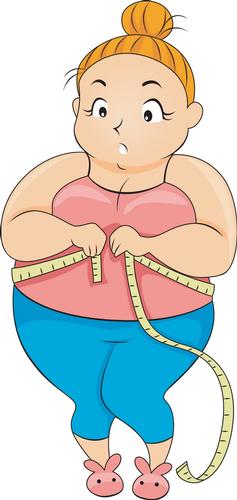How many calories do we need to lose weight safely and effectively?
In order to just lose weight, in theory, all you have to do is to just apply the “energy in less than energy out” principle ...or...in simple words - eat less and do more by increasing your activity levels.
Although it might look good and easy on paper, this over simplistic approach does not always lead to a safe and sustainable weight loss and many people lose weight and then end up putting it all back on again ... and sometimes even more. Why? Because it is not sustainable to constantly deprive your body of calories and live under a strict exercise regime....and not to mention that is not only the quantity of the calories that matters but the quality of those calories too (subject which I will approach in the next blog post.... so, stay tuned).
It is not about just any body weight, but in fact, body fat is what we actually want to get rid of – not just external (as in just under the skin adipose tissue which we can see it and feel it), but internal too (as in visceral fat – around our internal organs which we cannot see). In order to achieve this, there are many other factors we need to consider in order to keep us in good health such as genetic, metabolism, lifestyle – just to name a few.
How many calories do we need per day?
And the very straight forward answer is “it depends” ...on whether we want to gain, maintain or lose weight.
Therefore, when we want to lose weight, we need to first set the baseline – how many calories we need in order to maintain where we are, then reduce this number through physical exercise and less intake caloric from food.
Although there are many complex equations out there, a very good starting point in understanding how many calories we need per day is this very simple formula which calculates our total daily energy expenditure (TDEE).
TDEE = BMR x activity level
Therefore, we must first take into account our basal metabolic rate BMR – which is how many calories our body needs just for our vital function (such as breathing and cell production) and our activity levels in a day.
To find out our BMR, we can use the Harris – Benedict formula:
For men: BMR = 10 x weight (kg) + 6.25 x height (cm) – 5 x age (years) + 5
For women: BMR = 10 x weight (kg) + 6.25 x height (cm) – 5 x age (years) – 161
Then, we must take into account (by making the most of our honesty and integrity) our activity levels described by the following coefficients:
1.2 – for Sedentary (little or no exercise)
1.375 - Lightly active (light exercise/sports 1-3 days/week)
1.55 - Moderately active (moderate exercise/sports 3-5 days/week)
1.725 - Very active (hard exercise/sports 6-7 days a week)
1.9 - If you are extra active (very hard exercise/sports & a physical job)
In order to lose fat, it is generally recommended a daily caloric deficit of 20%. Anything more than this could lead to weight loss too, but it is very likely we lose muscle and not fat. Losing muscle will, in time, slow down the fat burning process and this is why we can end up with putting on more weight once we stop a drastic diet.
Assuming that this 20% is equal to 500kcal/day, we could achieve the caloric deficit in 3 ways:
- Eating 500kcal less /day;
- Burning off through exercise 500kcal/day;
- Combining both of the above methods: eating 250 kcal/day less and burning off through exercise 250kcal/day.
Ideally, we should try and create this caloric deficit not only through eating less but increasing our exercise levels both cardio and resistance training. Bear in mind that the more muscle mass we have the more calories we could burn even when resting.
So, once we have our TDEE number for maintaining our body weight, we take 20% out in order to find out how many calories we need in one day in order to lose safely and effectively weight.
Setting the goal for weight loss is probably the most important step in the process. Most of the times people just set idealistic expectations which once not achieved trigger disappointment, relapses and ... then back to square one.
However, we choose to reduce our calories it is always recommended that we aim to lose weight gradually at a rate of 0.5kg to 1kg (1-2 lbs) per week, or 0.5 – 1% of total body weight - percentage wise being a more realistic goal because the bigger we are the more we can afford to lose safely.
According to experts, losing between 1- 2pounds weekly is a safer, sounder approach to weight loss. Since 1 pound of fat equals approximately 3,500 calories, by reducing your caloric intake by 3,500 to 7,000 calories each week, you’ll safely lose about 1 to 2 pounds each week.
Let’s take as an example “our client Mary”.
Mary is 35 years old professional who is been working from home since Mach 2020 when all the COVID19 situation started. During the “normal times” when people use to work from the office, Mary use to commute every day, and she used to go to the gym 2-3 times/ week and her body weight used to be 63.5 kilograms (140lbs). Since March 2020 until January 2021, after Christmas and with a 3rd lockdown in place when all gyms closed, Mary ended up putting on weight around 8 kilograms (17lbs) due to very little to none physical activity and she is now 70kilograms (154lbs) which is overweight for her 163cm (5’4”) height and she decided she needs to do something about it. Mary reached out to ATLAS to help her out lose weight safely and effectively.
Let’s see first how many calories would Mary need in order to create a safe caloric deficit in order for her to shift that extra weight.
Since Mary is a female, her BMR would be calculated as 10 X 70(kg) + 6.25 X 163(cm) – 5 X 35 (age) – 161
Mary’s BMR = 1,383kcal – this is how many calories she would need so that her body just to function daily.
Now Mary has a healthy nutrition plan, she is also doing 2 personal training sessions /week with ATLAS and has a walking plan homework, so for her activity level we will use the 1.375 coefficient which describes Mary’s current 2 light exercise sessions plus 1 walking session per week.
Mary’s TDEE = 1,383(kcal) X 1.375, then the total of Mary’s TDEE is equal to 1,901(kcal).
This means that in order to lose weight safely, Mary would need to reduce her daily calories by 380 (which is 20% of her TDEE) and not to go less than 1,521kcal/day. In order for her to maintain a good health this would be best achieved through eating less 190kcal/day and burning off with exercise the either 190kcal/day.
Be like Mary, lose weight clever J
Healthy regards,
ATLAS






